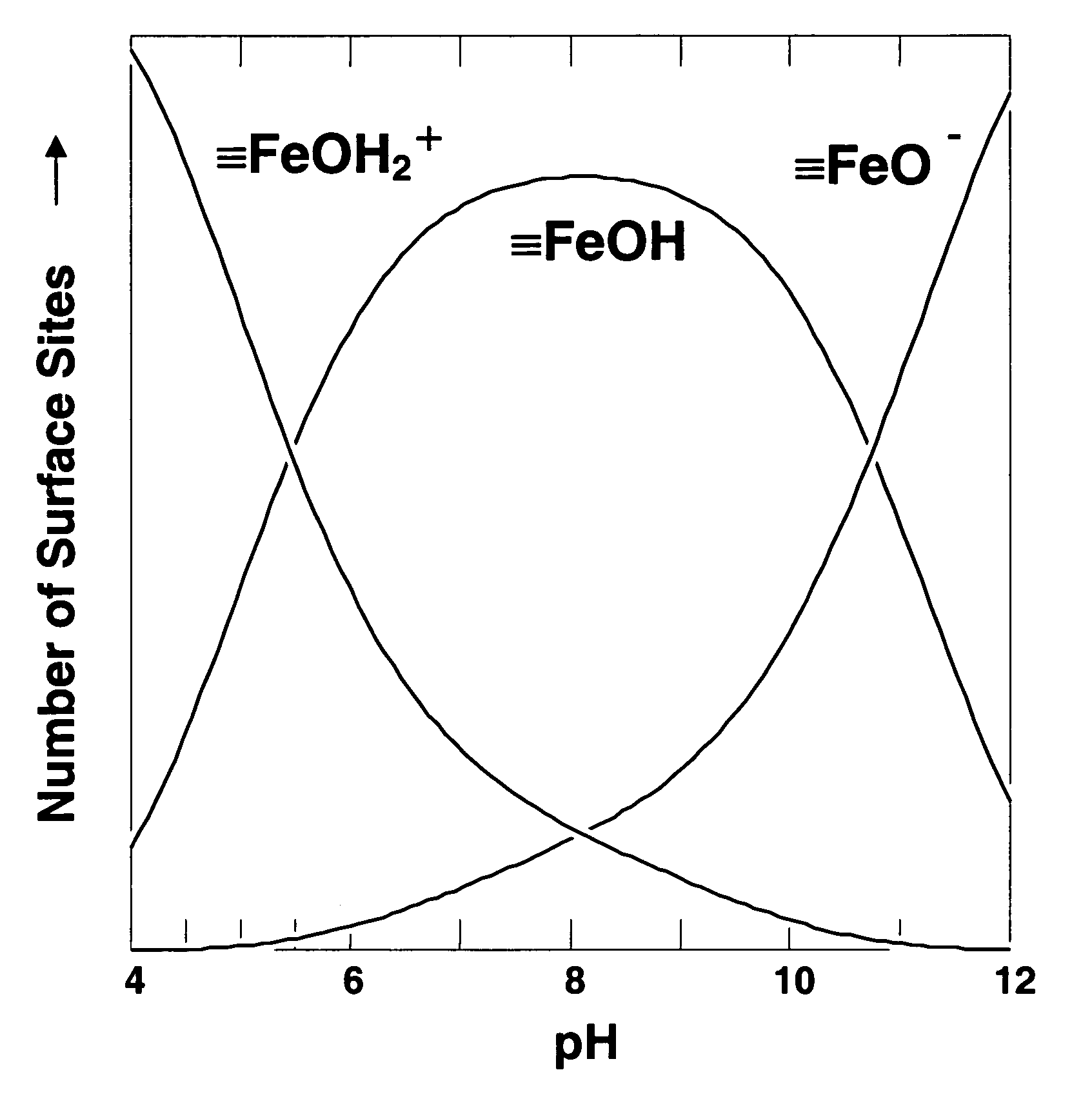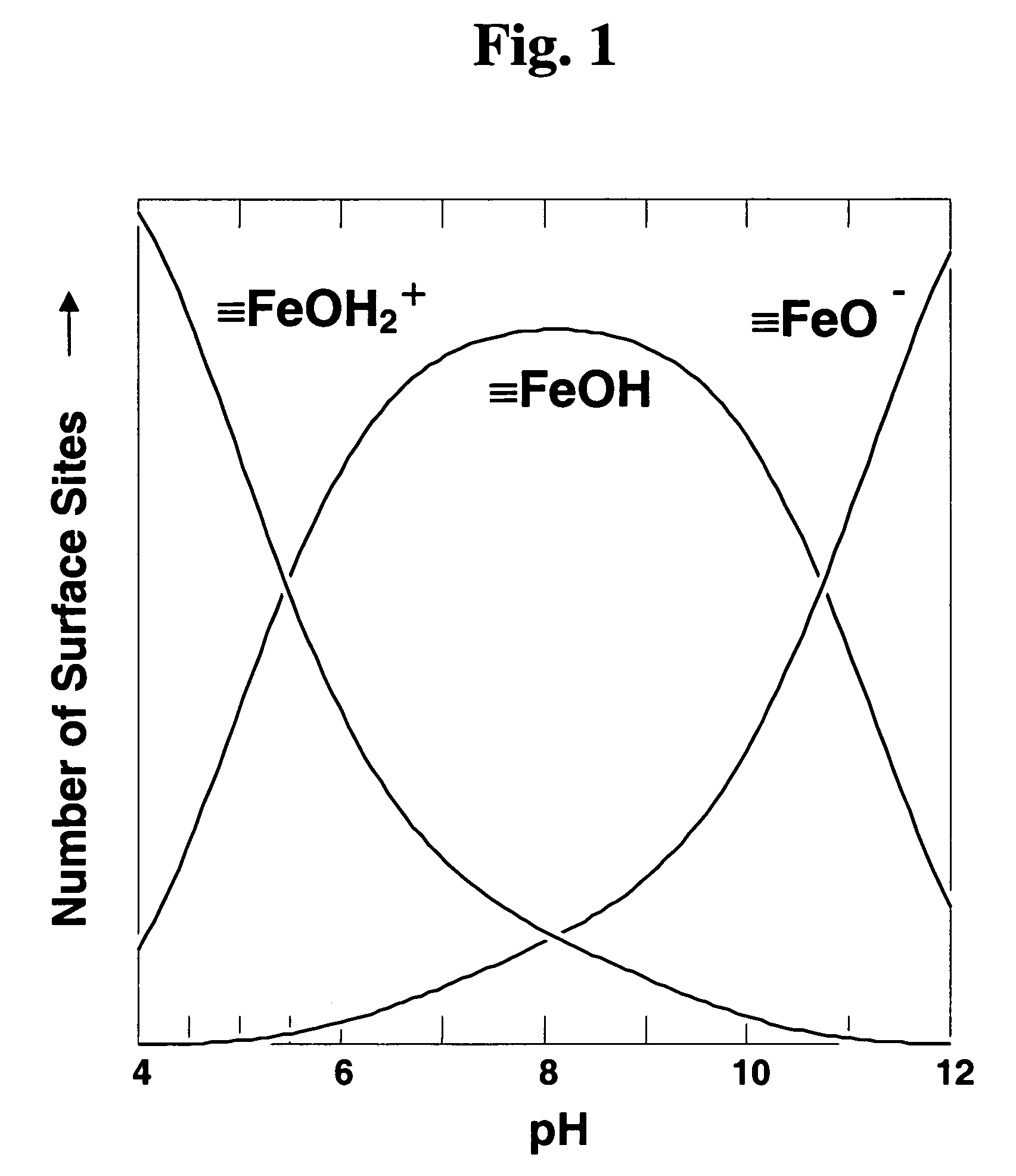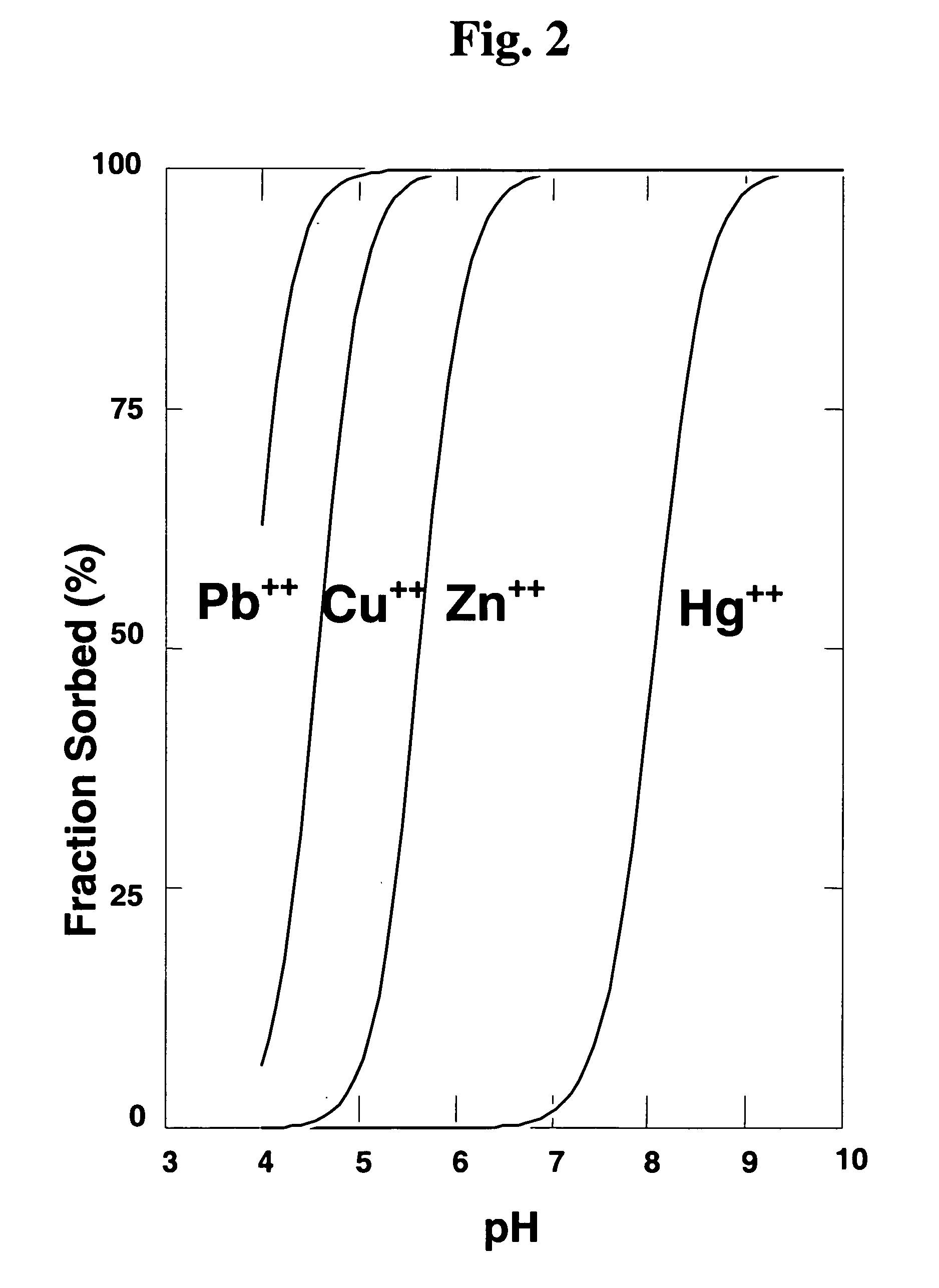In situ treatment process to remove metal contamination from groundwater
a treatment process and groundwater technology, applied in water treatment multi-stage treatment, water/sewage treatment, separation process, etc., can solve problems such as unsatisfactory demand for metals, and achieve the effect of preventing metal desorption
- Summary
- Abstract
- Description
- Claims
- Application Information
AI Technical Summary
Benefits of technology
Problems solved by technology
Method used
Image
Examples
example 1
Remediation of Acid Contamination
[0078]An aquifer is contaminated by metal-rich acid drainage from a mining operation. The mine is situated upgradient of a groundwater-bearing formation that has a slow but general flow direction downgradient. The acid contamination of the groundwater-bearing formation decreases the metal sorption capacity of the mineral compounds within the groundwater-bearing formation. The sporadic, ongoing release of acid contamination results in several plumes of heavy metal contamination that extend up to 1000 yards downgradient of the mining operation.
[0079]The groundwater-bearing formation contains significant portion of kaolinite mineral compounds (alumina-based), but little calcium.
[0080]Drainage from the mining operation is modified so that metal-contaminated water no longer enters the aquifer.
[0081]An extraction well is drilled about 1000 yards downgradient of the mining operation to assist in flushing water through the contaminated portion of the aquifer...
example 2
Backstop for Source Control
[0086]A mine operator carries out several processes for recovery of precious metals from ore-laden earth using acidic solutions. Some of the acidic solutions percolate into an aquifer, creating a plume of metal contamination gradually migrating downgradient. The mine operators terminate the recovery processes and carry out treatments, such as sulfide precipitation of the acid washes, to remove dangerous heavy metals from the contaminated groundwater. The treatments are largely but not completely effective and contaminant metals continue to migrate downgradient through the aquifer in small but significant concentrations. There is furthermore concern that some of the previously immobilized metals will be remobilized at a future date.
[0087]The invention is applied as a source control to minimize continued movement of contaminants along the aquifer. A 2N aqueous solution of sodium hydroxide is pumped into the ground in a linear arrays of ten injection wells th...
example 3
Backstop for Permeable Reactive Barriers
[0090]A chemical waste site provides a metal contamination source. Industrial waste buried in containers underground is subject to leaking as the old, buried containers deteriorate. The waste site overlies an aquifer through which water is migrating in a certain direction. The metal contamination enters the aquifer and forms a plume that migrates downgradient. A reactive barrier is set up that approximately spans the width of the metal contamination plume (as determined from sample testing) and is located downgradient of the metal contamination source. The permeable reactive barrier serves as a first protective stage that prevents contamination from migrating off the site.
[0091]To enhance the effectiveness of the cleansing properties of the groundwater-bearing formation, injection points are instituted in a linear pattern downgradient of the chemical waste site and reactive barrier. A volume of A 5N solution of sodium hydroxide is pumped into ...
PUM
 Login to View More
Login to View More Abstract
Description
Claims
Application Information
 Login to View More
Login to View More - R&D
- Intellectual Property
- Life Sciences
- Materials
- Tech Scout
- Unparalleled Data Quality
- Higher Quality Content
- 60% Fewer Hallucinations
Browse by: Latest US Patents, China's latest patents, Technical Efficacy Thesaurus, Application Domain, Technology Topic, Popular Technical Reports.
© 2025 PatSnap. All rights reserved.Legal|Privacy policy|Modern Slavery Act Transparency Statement|Sitemap|About US| Contact US: help@patsnap.com



